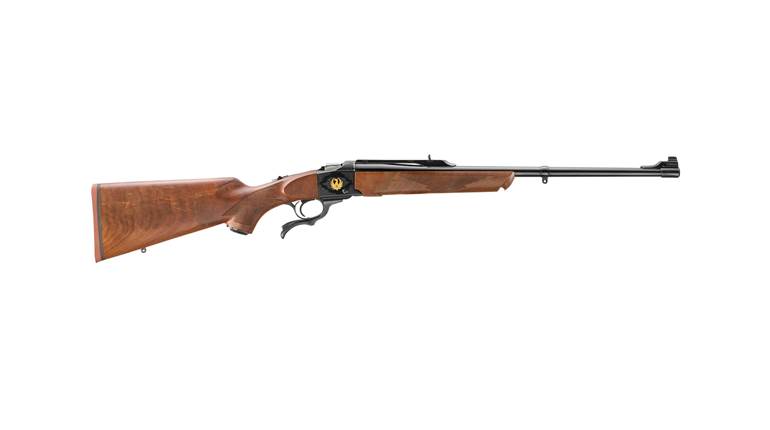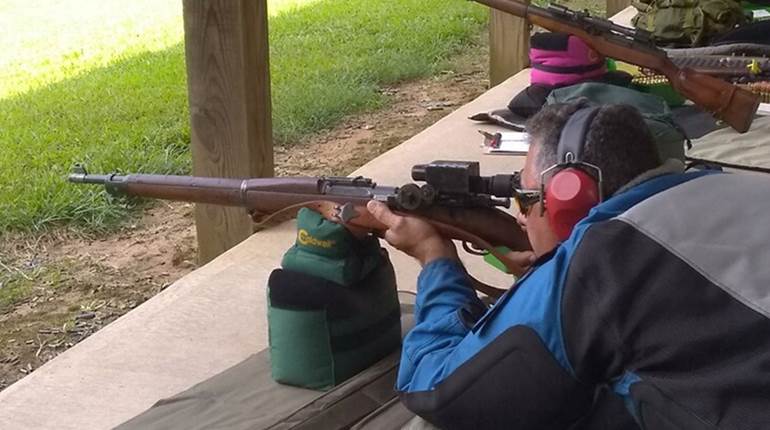
During the last half of the 19th century the United States was consumed with taming the West. The Civil War settled, for the time being, much of the rancor of the eastern part of the burgeoning country.
In terms of firearms, repeating rifles and handguns were the up-and-coming arms of the day. The military clung to the single-shot Trapdoor Springfield as long as it could, but by the 1880s, it was clear that a repeating rifle would have to be a part of a modern military force.
In 1892, a competition was undertaken to determine a replacement for the Trapdoor Springfield. Another factor that became evident during this period was that new guns would be using that newfangled smokeless propellant. This new propellant produced higher pressures and more energy than black powder.
The notion that a smaller bullet driven to a higher velocity could be more effective over a longer range was regarded as blasphemy to established military ordnance men at the time. Some of those blasphemers even touted the idea that a bullet weighing as little as one-fifth that of the .45-70 ball would be more effective.
The upshot of the 1892 trials was the adoption of the 1892 Krag-Jorgenson rifle and its .30-40 Krag cartridge—a 220-gr. bullet launched at 2,000 fps with the powders of the day. Some six years after its adoption, the U.S. got into that 3 1/2-month fracas with Spain known as the Spanish-American War. Much of that fight occurred in Cuba, and our guys got a pretty fair spanking from the Spanish 7 mm Mauser cartridge in the 1898 Mauser rifle—clearly time for a new rifle.

The main issues with the 1892 Krag-Jorgenson were its magazine and the inability to use pre-loaded stripper clips to recharge it. Too, the .30-40 Krag cartridge lacked the trajectory and punch of the 7x57 mm Mauser. The Springfield Armory began working on a new bolt-action rifle at the turn of the century.
It is said that imitation is the sincerest form of flattery, and Springfield must have been very impressed with the ’98 Mauser, because the rifle it developed and began manufacturing in 1903 incorporated many of the Mauser’s features—so many, in fact, that the United States government had to pay Mauser some $3 million for patent infringement, despite the Springfield’s use of a two-piece firing pin to attempt to avoid the patent infringement.
Initially, the 1903 Springfield was chambered to shoot a cartridge first known as the .30-45 because of its .30-cal. bullet being launched by 45 grains of smokeless powder. The archaic nomenclature of the 19th century was quickly replaced, and the cartridge was renamed as the .30-03, indicating the year of adoption.
Ordnance officers still clung to the notion of a relatively heavy-for-caliber bullet, though, and the 220-grain bullet was adopted. The case was a completely new rimless design based—not surprisingly—upon the 7 x 57 mm Mauser cartridge but larger. Still, though, it could not achieve a muzzle velocity greater than 2,300 fps, which limited its trajectory to only slightly better than the old Krag round.
Another problem with the cartridge was its tendency to erode the throat of the rifle rather quickly because of the pressure needed to get as much velocity as the .30-03 achieved. Other countries were quickly adopting lighter bullets in the 150-grain weight area that included spitzer-type points. These bullets could be driven faster than the old heavy bullets, and the spitzer points were far more aerodynamic, yielding flatter trajectories and more energy to the target.

I can imagine the grumbling and sputtering of the old ordnance men as they were more or less forced to adopt these pipsqueak-like bullets in their newfangled rifle. Nevertheless, three years later, the 150-gr. spitzer bullet was made standard, and the cartridge was renamed the .30-06 Springfield.
To preserve the early barrels that had a somewhat longer throat for the 220-gr. bullet, these early rifles were returned to the Springfield Armory where their barrels were removed; one thread was removed at the breech and headspaced for the new cartridge. That is why some of these early 1903s have a barrel slightly less than 24 inches long. Now, of course, these examples are quite rare.
Another change adopted in the 1903 was the elimination of the sliding rod-type bayonet and replacing it with a removable blade-type bayonet. President Theodore Roosevelt felt the sliding-rod bayonet was too flimsy and ordered the replacement.
When the U.S. entered World War I, the Springfield and Rock Island armories had made some 843,000-plus 1903 Springfields. Wartime feedback indicated that some rifles failed and injured the soldiers using them, though no fatalities were recorded.
An investigation into these failures showed that many receivers received a single heat treatment or were case-hardened. This was insufficient to handle the higher pressures of the .30-06 cartridge, because some of the carbon could be burned out in the single heat treatment process.
Both armories quickly changed to a double heat treatment process that ensured the carbon content of the steel would remain up to specification. This occurred at approximately serial number 800,000 at the Springfield Armory and 200,000 at the Rock Island facility.

So-called “low number” Springfields—those with serial numbers lower than those mentioned above—are worth less than the “high number” rifles on the market today, and many gunsmiths recommend that they not be fired.
The 1903 Springfield had a pretty good manufacturing and service run. Made from 1905 through 1949, with more than 1.3 million produced, the rifle saw service from 1907 to 1974. Many of the latter-year uses were as a sniper rifle. The 1903 Springfield has a reputation of being very accurate and reliable.
Volumes have been written regarding the variations of the 1903 Springfield—everything from wartime manufacturers (including such names as Remington and Smith-Corona) to specialty rifles like one with an Elder-type periscope stock for trench warfare use and a National Match meant for competition. There were even some special NRA variants sold to NRA members from 1915 to 1917. These are stamped “NRA” on the forward portion of the trigger guard.
After World War I, 1903s began to appear on the surplus market and have always been popular with both target shooters and hunters. Thousands have been “sporterized” and a cottage industry catering to this desire flourished from the 1920s through the 1960s.
Today, the 1903 Springfield carries quite a premium, as do most 20th century military rifles. Parts rifles—those built up from surplus and/or remanufactured parts—are attempting to sate the market as well.
More than a century after its introduction, the gun that started out as a blatant patent rip-off remains quite popular. There’s probably a reason for that.






































